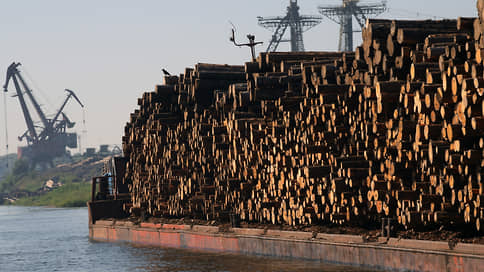Exports of Russian timber cargo to China at the end of 2023 increased by a quarter
[ad_1]

Supplies of Russian pulp and paper sector products to China grew by a quarter in 2023, far outpacing exports of lumber and roundwood. China’s share in the total volume of timber exports from the Russian Federation continues to increase. But, according to experts, against the backdrop of a slowing economy, demand from China may stop growing, which will lead to a surplus of certain products on the Russian domestic market.
Exports of Russian pulp and paper products (PPP) to China in 2023 increased by 25.4%, to 3.6 million tons, Roslesinforge told Kommersant. The total volume of timber exports to China last year remained at the 2022 level and amounted to 13.6 million tons.
The bulk of the export of pulp and paper products was made up of pulp, supplies of which to China increased 1.4 times, to almost 2 million tons. Deliveries of paper and cardboard at the end of 2023 exceeded 1.6 million tons. The volume of exports of forest chemical products (mainly activated carbon, tall oil and liquor) to China in 2023, according to the agency, amounted to 18.3 thousand tons in weight terms and $13.5 million in value terms.
For comparison, sawn timber exports from Russia to China increased by 3% in 2023, while the export of unprocessed timber expectedly fell by a quarter due to government restrictions on roundwood. In total, the export of round timber and lumber amounted to about 14 million cubic meters. As the head of Roslesinforg Pavel Chashchin reported to Kommersant, at the end of last year, the share of Asian countries in the export of timber complex increased from 80% to 92%.
As Denis Kondratyev, managing partner of the Center for System Solutions, notes, in 2023 China was the main market for Russian container boards with a share of 76% versus 56% in 2022. At the same time, the center’s analysis notes, the total volume of supplies to China decreased by 14%. “Recently, the Chinese economy has been slowing down, and China’s manufacturing activity has been declining throughout the year. Demand for Chinese exports has been gradually falling for several years amid a slowdown in the global economy,” experts point out. The top three key consumers of container boards from the Russian Federation also include Uzbekistan (6%) and Turkey (5%).
China has long held the leading position among the world’s containerboard producers, but production has been declining in recent years, with excess supply and declining demand contributing to record low prices. According to Fisher, containerboard capacity utilization in China has dropped to 50% by early 2023. “Thus, in the near future, the sales potential of containerboard on the Chinese market may be severely limited, and the expectations of Russian containerboard manufacturers may turn out to be too high,” the center believes. They believe that against the backdrop of increasingly complex export supplies, the most expected scenario for the development of the Russian containerboard market is a surplus and stabilization of prices for them.
The center also notes that Turkey, the second most important market for Russian pulp and paper exporters, is also problematic: in January, the country’s Ministry of Trade began an investigation into the import of corrugated paper and test liner, regardless of the country of origin. And although Russia is not on the list of countries causing the greatest concern to Turkish regulators, if the investigation ends with the introduction of special protective measures (in the form of import duties or quotas), such measures will also affect Russian suppliers.
[ad_2]
Source link





